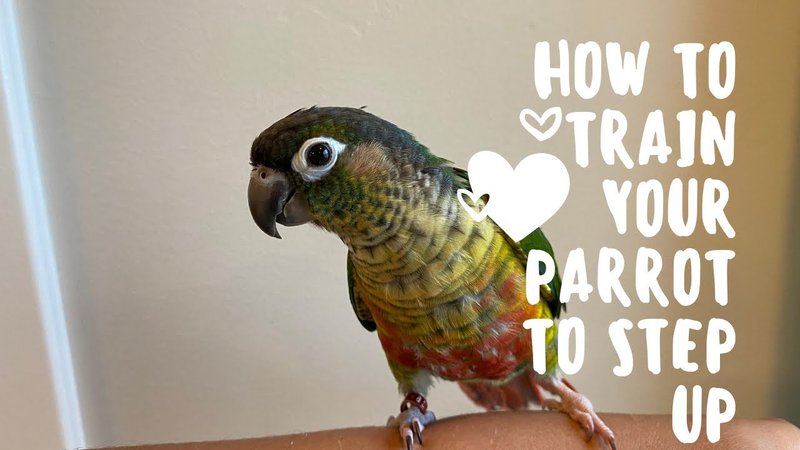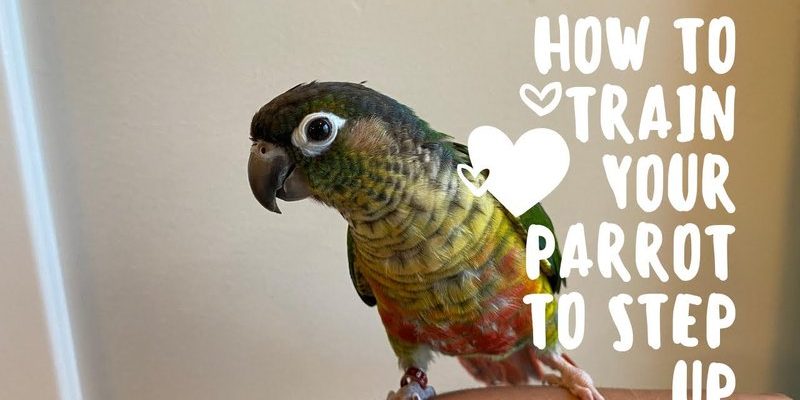
Now, when you’re ready to dive into the world of parrot training, you’ll want to make sure you have some basic tools at your disposal. A good start is a reliable remote for interactive games or training sessions—think about getting a remote like the Coconut Remote. It adds a fun twist to your training routine, but we’ll talk more about that later. For now, let’s explore the exciting world of parrot training!
Understanding Your Parrot’s Behavior
Before you even think about teaching your parrot any cool tricks, it’s crucial to understand their behavior. Parrots are social creatures and thrive on interaction. They need mental stimulation, physical exercise, and social bonding. When you recognize their natural instincts, you set the stage for successful training.
Every parrot has its unique personality. Some might be bold and adventurous, while others are more cautious. Paying attention to how your parrot reacts to different situations can help you design a training approach that suits them best. For instance, if your parrot is shy, start with gentle, short training sessions to build trust.
And here’s a pro tip: use positive reinforcement! Parrots respond well to rewards like treats or praise. When your parrot performs a desired action, immediately reward them. This helps them connect the dots and encourages them to repeat the behavior.
Basic Training Techniques
Let’s dive into some basic techniques that form the foundation of parrot training. The concepts of step-up, recall, and tricks are essential parts of your parrot’s training journey.
1. Step-Up: This is usually the first command you’ll teach your parrot. It’s about getting them to step onto your finger or a perch. Start by holding your hand close to their feet. Encourage them with a soft tone, saying something like “step up” as they hop onto your finger. Use a treat to motivate them—it’s all about making it a positive experience.
2. Recall: This command helps your parrot come back to you when called. Begin by calling their name in a friendly voice from a short distance. Use your finger or a treat to coax them toward you. Gradually increase the distance as they become more comfortable. Remember, the goal is to make them feel excited about returning to you.
3. Tricks: Teaching tricks is where the fun really kicks in! Start small, like teaching your parrot to wave or spin. Use the same positive reinforcement technique—show them what to do, encourage them, and reward them when they get it right. It’s like playing a game of fetch; the more fun you make it, the more eager they’ll be to learn.
Choosing the Right Training Environment
The environment where you train your parrot makes a big difference. Ideally, you want a quiet space with minimal distractions. If your parrot is easily startled or distracted by noises, their attention will wander, and training can become frustrating for both of you.
Consider a cozy corner of your home or a room that doesn’t experience much foot traffic. Using a training stand can create a designated spot for learning, which helps signal to your parrot that it’s time to focus.
Also, keep in mind the time of day. Parrots can be mood-sensitive, so try to train them when they’re feeling active and alert. Early mornings or late afternoons might be better than right after a meal when they may feel a bit sleepy.
Common Problems and Solutions
Training your parrot might come with a few bumps along the way. Here are some common issues and how to tackle them:
– Biting: If your parrot bites during training, it can be a sign of fear or frustration. First, assess if you’re moving too fast. Take a step back. Use treats to encourage positive interactions.
– Lack of Interest: Sometimes, your parrot might simply not be in the mood. If they’re uninterested, it could be too much training at once, or maybe they need a break. Try to make sessions shorter and more engaging. Remember, training should be fun!
– Distractions: If your parrot gets distracted easily, consider changing up your training times or location. A quieter setting can help them focus better on you and the task at hand.
How to Use the Coconut Remote
Now that you have the basics down, let’s talk about incorporating the Coconut Remote into your training routine. This remote can help in various fun and engaging ways. You can program it to issue commands, reward them with sounds, or engage in interactive play.
Here’s a quick guide on using it effectively:
1. Sync the Remote: Begin by syncing your Coconut Remote with your parrot’s training stand. Follow the user manual to get it set up.
2. Start Simple: Use the remote to send basic commands. For instance, if you want your parrot to step up, press a button that signals them to do so. Pair this with verbal cues and rewards.
3. Mix it Up: As your parrot gets the hang of it, introduce new commands or sounds. This can keep your training sessions fresh and interesting for them.
Just remember, the goal is to enhance the training experience, not replace traditional methods. Use the remote as a fun add-on to what you’re already doing.
Consistency is Key
Consistency is a vital part of training your parrot. Just like kids, parrots need routine to understand what’s expected of them. Make training a daily activity, even if it’s just for a few minutes. This helps build muscle memory and reinforces learning.
If you’re teaching multiple commands, consider focusing on one at a time. Once your parrot has mastered that, you can gradually introduce new ones. This structured approach helps prevent confusion and keeps your bird engaged.
Additionally, everyone in your household should use the same commands. If you say “step up” and someone else says “come here,” your parrot might get a bit mixed up. Make it a team effort, and you’ll see faster progress.
Celebrating Achievements
When your parrot learns a new trick or command, celebrate! This isn’t just about you; it’s about making your parrot feel proud of their achievement too. A simple “good job!” paired with a favorite treat can reinforce their success.
You might even consider showing off their new skills to family and friends. Creating a little show can be a fun bonding experience for you and your parrot. Just remember to keep it light-hearted and enjoyable.
Training is a journey filled with small victories, so cherish each moment.
In conclusion, training your parrot is an exercise of patience, creativity, and love. Equip yourself with the right techniques, tools, and a proper training environment. Remember to keep things fun and engaging, and you’ll build a strong bond with your feathered friend. Enjoy the journey—it’s as rewarding as it is entertaining!

